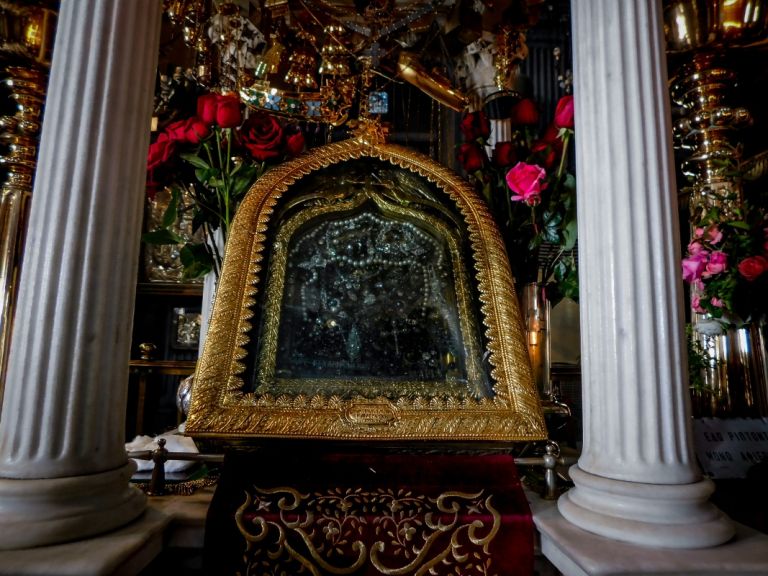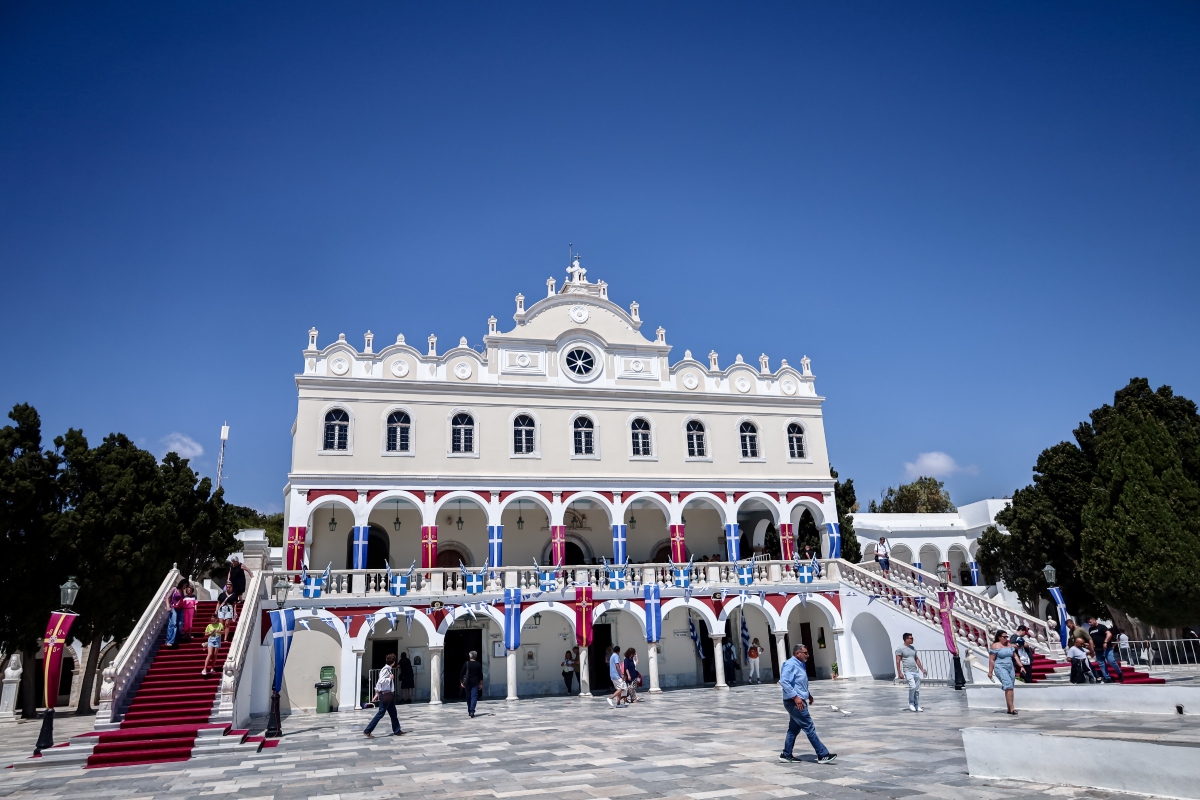Greeks Worldwide Celebrate the Dormition of the Virgin Mary: A Day of Faith, Pilgrimage, and Summer Farewell

Πηγή Φωτογραφίας: (ΜΙΧΑΛΗΣ ΠΑΠΑΝΙΚΟΛΑΟΥ/ EUROKINISSI)//From mountain monasteries to island shrines, August 15 unites the Greek Orthodox world in reverence and tradition
Greeks around the globe are celebrating the Dormition of the Virgin Mary today, August 15 — one of the most sacred and emotionally resonant feast days in the Orthodox Christian calendar. Known as the “Easter of the Summer,” it commemorates the Virgin Mary’s peaceful passing from earthly life, and her assumption into heaven.
Second only to Orthodox Easter in religious significance, the Dormition (Koimisis tis Theotokou) is marked with spiritual intensity, mass pilgrimages, church liturgies, and vibrant local customs. The feast comes at the heart of summer — and in Greece, it also signals the final wave of departures from cities to the countryside, as families take one last holiday before schools reopen in early September.

A Tapestry of Celebrations Across Greece
Each region of Greece celebrates the Dormition with its own unique rituals, blending deep religious faith with local culture, history, and even folklore.
On Tinos, thousands of Orthodox pilgrims descend upon the famed Church of Panagia Evangelistria, climbing the long pathway — many on their knees — to pay homage to the miraculous icon of the Virgin. A royal decree from 1836 extends official celebrations until August 23, while the island also mourns the 1940 sinking of the battleship “Elli” by an Italian submarine — a tragedy that occurred on this very day, as the ship was moored for the feast.
In northern Greece, the Panagia Soumela Monastery near Mount Vermion becomes the epicenter for Pontian Greeksfrom around the world. The monastery houses a revered icon of the Virgin Mary, traditionally believed to have been painted by St. Luke the Evangelist. The spiritual power of this pilgrimage connects Greek diaspora communities to their ancestral roots in Asia Minor.
Further south, on Paros, the 4th-century Church of Ekatontapyliani (“Church of 100 Doors”) becomes a magnet for believers. Legend claims St. Helen, on her way to Jerusalem, vowed to build the church if she found the True Cross. Though only 99 doors are visible, the myth of the “hidden gate” adds a mystical layer to the celebration.
In Kozani, pilgrims flock to the Monastery of Panagia in Mikrokastro, where a 1603 icon of the Virgin is venerated. Meanwhile, in nearby Siatista, the tradition takes a dramatic turn: pilgrims arrive on decorated horses, echoing the mounted freedom fighters of the Ottoman era. It’s a vivid tribute to both faith and historical resilience.
The Sacred, the Mysterious, and the Joyful
Perhaps the most mysterious celebration occurs on Kefalonia, where each year on Dormition Day, small, harmless snakes — known locally as “Virgin Mary’s snakes” — mysteriously appear at the church near Markopoulo. According to legend, they are the transformed souls of nuns who prayed for deliverance from pirate invaders.
On Patmos, where the Book of Revelation was written, monks carry a gold-trimmed epitaphios (funeral bier) through the narrow, cobbled streets — a striking blend of Easter symbolism and Dormition devotion.
In Zagorohoria, high in the Epirus mountains, celebrations last three full days, featuring non-stop dancing, feasting, and a rare communal spirit — a living reflection of Orthodox joy and hospitality.
On Thassos, the religious service is followed by a rustic but eagerly anticipated meal of potatoes, rice, and veal stew with onions — a ritual that feeds both body and soul.
And in Lesvos, the faithful walk 25 kilometers on foot from Mytilini to the hilltop church of Panagia in Agiassos, where they sleep under the stars in the church courtyard, part of a spiritual journey that has remained unchanged for generations.
A Living Tradition for Greeks Everywhere
Whether celebrated in a remote mountain chapel or a bustling city cathedral, the Dormition of the Virgin Mary brings together faith, history, and identity. For Greeks living abroad, August 15 remains a touchstone — a moment to reconnect with their roots, honor their ancestors, and celebrate the enduring role of Panagia (the All-Holy Mother) in Greek Orthodox life.
As modern life accelerates, these deeply rooted traditions remind us that sacred time still holds a place in national memory — and that the Virgin Mary, as protector and comforter, continues to inspire unity, resilience, and grace among Greeks everywhere.
Source: pagenews.gr
Διαβάστε όλες τις τελευταίες Ειδήσεις από την Ελλάδα και τον Κόσμο






Το σχόλιο σας